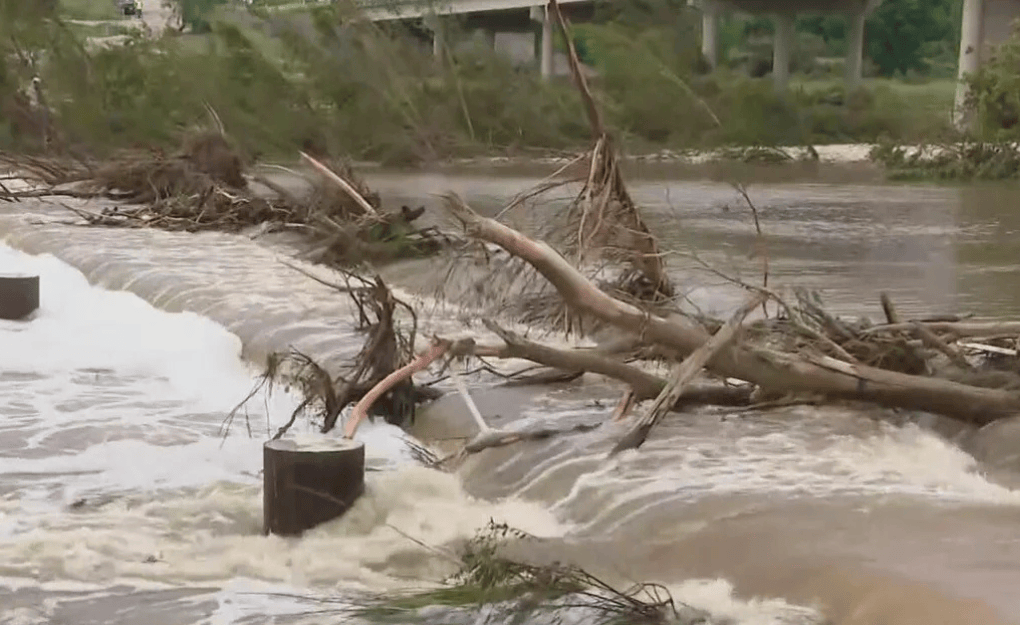Texas Hill Country Flash Floods have unleashed a devastating disaster across Central Texas, beginning on July 4, 2025. Torrential rains caused the Guadalupe River to surge within hours, claiming at least 81 lives and leaving more than 40 people missing, many of them children. This calamitous event ranks among the deadliest floods in U.S. history over the past century.
Geographical Drivers Behind the Floods
The Texas Hill Country Flash Floods were fueled by unique environmental and geological conditions. Located in a semi-arid region, the thin, compacted soils common to the Hill Country absorb little water. This leads to rapid surface runoff during heavy rains, with shallow creeks swelling dramatically as they funnel water into rivers. The Balcones Escarpment—a steep, limestone ridge—forces moist air from the Gulf of Mexico to rise, cool, and condense, resulting in persistent, heavy rainfall. These factors combined to create conditions ripe for sudden and destructive flash flooding.
Climate Change’s Amplifying Influence
Warming temperatures driven by climate change are intensifying rainfall events around the globe. For every degree Celsius increase in temperature, the atmosphere’s moisture-holding capacity increases by about 7%, leading to heavier downpours. In Central Texas, warming waters in the Gulf of Mexico have increased evaporation and moisture transport inland, feeding storms that unleash more frequent and intense rainfall. The recent floods are a stark reminder of these changing climatic patterns and their deadly consequences.
Breakdown of Warning Systems and Emergency Response
Reports from survivors in towns such as Wimberley, Dripping Springs, and New Braunfels indicate warnings were either not issued in time or failed to reach residents effectively. Though the National Weather Service (NWS) issued flood alerts, they arrived too late to facilitate safe evacuations. Additionally, budget cuts and staffing reductions at the NWS in recent years have raised concern that forecasting accuracy and communication were compromised. Local authorities, overwhelmed by the sudden deluge, could not deploy adequate emergency alerts fast enough, underscoring critical gaps in disaster response systems.
Flash Flood Alley: A Historic Risk Zone
Central Texas occupies what meteorologists call “Flash Flood Alley” due to its frequent history of sudden floods. In 1987, a tragic flood on the Guadalupe River claimed ten lives, yet recent flooding is deadlier and more widespread—a combination of climate change, population growth, and expanded development. Now, new subdivision construction on flood plains is exacerbating risk by removing natural buffers and increasing surface runoff.
How Flash Floods Unfold in the Hill Country
Flash floods in the region occur when rain intensity surpasses soil absorption rates. Much of the water flows into small creeks that quickly channel into rivers. The steep terrain accelerates the ascent of these waters, creating powerful torrents that overwhelm roads, homes, and bridges. The dynamics of these floods leave little time for evacuation and emergency response, making them some of the most perilous natural hazards residents face.
Human Toll and Infrastructure Devastation
The devastation wrought by the Texas Hill Country Flash Floods includes not only tragic loss of life but also widespread displacement and damage to critical infrastructure. With roads washed away and bridges collapsed, rescue teams and locals are engaged in grueling search operations for the missing. Families are living in temporary shelters, while damaged power lines, water systems, and communications networks hamper recovery efforts. The economic toll is still being assessed but is expected to run into the hundreds of millions.
Urgent Need for Adaptive Measures
This disaster marks a turning point in urgent need for climate resilience and disaster preparedness:
- Enhanced flood warning systems tailored to local weather patterns
- Investment in natural flood buffers, including wetlands and riverbanks
- Fire code updates to prevent construction in high-risk flood zones
- Infrastructure redesign, such as elevated roads and improved drainage
- Community-based education, teaching rapid flood response and evacuation protocols
Such measures are essential to reduce the catastrophic impact of future floods.
Broader Lessons and Climate Adaptation
The Texas tragedy is a sombre example for communities worldwide. An era of more frequent extreme weather events demands reevaluating how we build towns, protections, and systems in flood zones. Combining improved emergency infrastructure, environmental conservation, and climate-smart urban planning can stem future loss of life and property.
Conclusion
The Texas Hill Country Flash Floods of July 2025 are a devastating warning call. With 81 confirmed dead, many more missing, and widespread ecological destruction, urgent action is needed. This disaster highlights the perilous intersection of climate change, outdated infrastructure, and inadequate preparedness. Without addressing these systemic vulnerabilities, similar tragedies will recur. As Texas begins long-term recovery and resilience planning, it sets a critical precedent in flood-prone regions worldwide.



